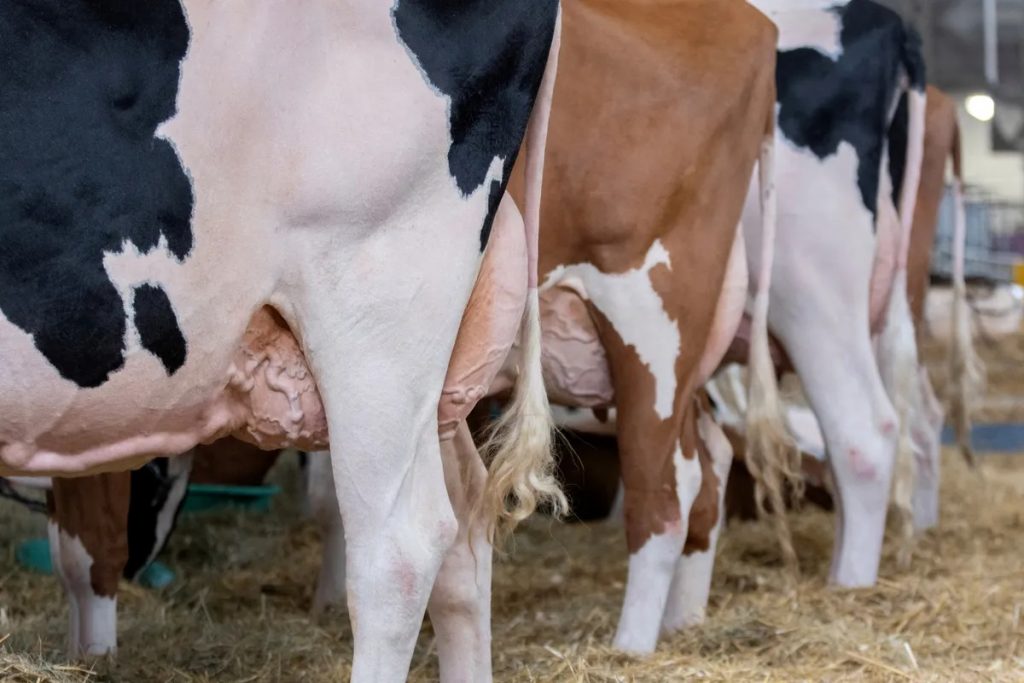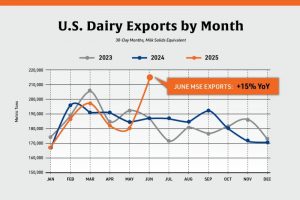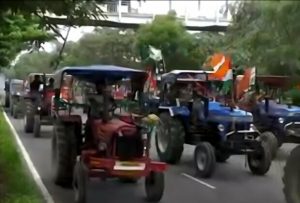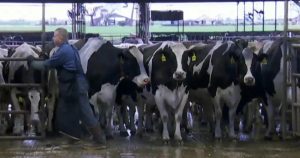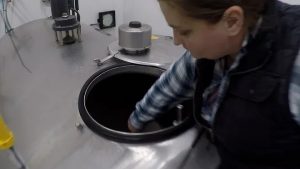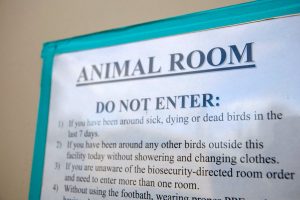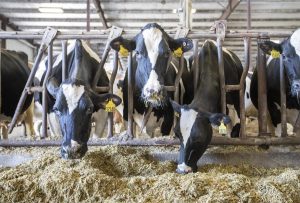
Flies buzzed around a pile of about a dozen dead cows on a California dairy farm.
This morbid image from a viral video in early October raised alarms about the dead heifers, half-covered behind barriers near a dusty country road. The cows were sick with bird flu, a virus that has spread among cattle in at least 14 states and has rapidly taken hold in California’s Central Valley, home to the nation’s largest dairy production.
An industry representative and state officials confirmed the scene of dead cattle was filmed outside a farm where there had been an outbreak of the virus. The arid region had experienced triple-digit temperatures, which officials believe may have been a factor in the cows’ deaths.
The images illustrate the impact of the rapid spread of bird flu across American dairies since its spillover from wild birds in Texas nearly a year ago to industrial-scale farms in California. It is known to have infected dozens of farmworkers along the way, including 15 dairy workers in California as of Thursday morning.
Bird flu hasn’t impacted the nation’s dairy supply. Milk is safe to drink once it’s pasteurized, a process that kills pathogens. However, officials worry about the downstream effects on workers and farmers. Federal officials have offered financial assistance for farmers who lose products or livestock.
Officials continue to say in occasional briefings that the risk to the general public remains low. But it has been higher for farmworkers, most of whom are Latino immigrants and may be undocumented or have work visas. These workers often come into direct contact with infected cattle or poultry. Thirty have contracted bird flu across the U.S., as of Thursday.
“It’s not yet a public health issue. It could be, but it’s not really yet,” said Bethany Alcauter, director of research and public health programs at the National Center for Farmworker Health, a nonprofit partnering in the federal bird flu response. “But right now, it is a worker health issue.”
Is California new epicenter for bird flu?
California reported its first sick cow in August and the first human with the disease this month. Overall, 137 herds have become infected.
“We’ve been watching it approach for some time,” Anja Raudabaugh, CEO of Western United Dairies, an association representing California dairy farmers, told USA TODAY. “Our additional biosecurity measures worked to a point until they didn’t. Now we have a lot of cow-to-cow transmission, and it’s been a big challenge for our dairy farmers in California.”
Over 330 dairy herds across 14 states have had infected cows, according to U.S. Department of Agriculture data. More than a third of infected herds are in California.
“Do we, meaning California and the U.S., want to be the epicenter of the next pandemic?” Dr. Gail Hansen, a former public health veterinarian for the state of Kansas, told USA TODAY. “I don’t want to be. I don’t want to sound too alarmist, but it’s certainly possible.”

Dead cows in the Central Valley
In early October, Dr. Crystal Heath, a California veterinarian who founded the animal welfare nonprofit Our Honor, recorded a video of dead cows in Tulare County, the California region with the greatest dairy production. There were no signs at that site that the dairy was preventing people or animals from getting near the infected carcasses, she said. She visited other farms and witnessed similar scenes, she said.
Dead cows infected with bird flu must be separated from their herds, which the video showed, the California Department of Food and Agriculture (CDFA) said in emailed responses. The cows must be stored on private property before being transported for “disposal” and should not be buried underground, the email said.
Raudabaugh, whose council represents the farm shown in the video, said the farm followed procedure, which requires separating the carcasses. Cows cannot be used for meat, she added. The carcasses instead go through “rendering,” in which they are incinerated and used for tallow or leather.
When the video was recorded, the rendering truck scheduled to collect the dead cows had been backlogged for several days, Raudabaugh said.
With severe infections, cows can die of bird flu. The mortality rate among cows is considered fairly low, at about 2%, by the American Veterinary Medical Association.
Raudabaugh’s dairy council estimated mortality rates from bird flu are closer to 10 to 15%. The region experienced a late-season heat wave, which made it trickier to discern whether temperatures contributed to the uptick in deaths.
There don’t appear to be dramatic changes in the number of cows dying from bird flu, said Dr. K. Fred Gingrich II, executive director of the American Association of Bovine Practitioners, an organization representing veterinarians who treat cows.
Gingrich views the dead cows in the video as an isolated incident that served as a good biosecurity measure to reduce bird flu’s spread on farms. He said rendering trucks that transport dead cows don’t enter farms because that could expose herds to diseases. Instead, they pick up dead cows at the nearest road. This process protects cattle but exposes farms to “bad PR” from activists, he said.
In a press briefing Thursday, Dr. Eric Deeble, a high-ranking USDA official, said there is no evidence of changes in the bird flu circulating in California cows when compared with the virus in other states. He said reports of higher death rates among cattle in the Central Valley could be attributed to environmental factors, such as excessive heat, farming practices and the density and proximity of animal populations to one another.
Dr. Elisha Frye, an associate professor at Cornell University, said it is important to note that U.S. dairy cows are typically the black and white Holstein breed, originally from cooler areas in northern Europe.
The cows, which can weigh more than 1,500 pounds, produce around 100 pounds of milk per day, which is akin to a person running a marathon, she explained. In addition to working hard every day, cows are more vulnerable to heat stress when cows get sick.

How bird flu spreads in cows
The route of bird flu transmission among cows hasn’t been established.
Initially, officials believed cows moving among farms and between states – a practice common in the dairy industry – was driving the spread. The USDA issued an order requiring that the milk of lactating dairy cows be tested for the disease before they could be moved across state lines, but bird flu continued to move across the country. The Los Angeles Times reported that bird flu had likely been introduced to California by cattle being transported.
In an email, the USDA said the virus is being transmitted through contact with objects, such as milking equipment or people’s clothes or vehicles and farm equipment, that have come into contact with infected cattle. It then spreads among herds.
The USDA strongly encouraged farmers to heed its recommendations, including limiting how often people move among farms, and how often they move cattle and equipment on and off worksites.
Gingrich said keeping this in check is difficult in large-scale operations in the Central Valley, where farming is ingrained in communities.
“We really don’t have a good grasp of how many dairies have been affected,” Gingrich told USA TODAY. “Producers are hesitant to report and they remain so unless states mandate it.”
If Gingrich were a dairy farmer in an affected state, he said, he’d be bulk-testing the milk in his tanks, which is required in California farms with infected herds and other farms nearby.
Milk samples test positive long before cows show symptoms. If they did this testing, farmers could more quickly take steps to protect their cows, notify veterinarians and alert neighbors when there is an infection. National surveillance of bulk-testing milk is needed, he said.
How are people catching bird flu?
Experts are still exploring the route of transmission to humans. Nearly all of the 31 reported cases this year were in poultry and dairy workers, and officials expect that cases will continue to increase. Officials say there is no evidence of spread from person to person.
At dairies, officials believe transmission to workers has happened when they have close contact with infected animals, for example, when people work near udders and raw milk, where traces of the virus are highest. Workers can be infected if they touch something contaminated or milk splashes on them and then touch their eyes, nose or mouth.
Infected workers have had mild symptoms, including eye redness, and recovered, state and federal officials said.
The increase in confirmed cases probably reflects growing awareness and testing, said Dr. Dean Blumberg, chief of the pediatric infectious diseases division at the University of California, Davis, Health. There don’t appear to be changes in how the disease is transmitted from animals to humans.
In Fresno County in the Central Valley, no humans have been reported with bird flu. But Dr. Rois Vohra, the county’s interim health officer, said he’s not holding his breath.
“Luck and fortune are smiling upon us,” said Vohra, who is also a professor of emergency medicine at the University of California, San Francisco. “These cases have been pretty mild, and people have recovered very quickly. But it does require vigilance and attention.”
What can be done to protect workers?
Measures used during the COVID-19 pandemic translate well to the bird flu response, Vohra said. These include using personal protective equipment. While N95 respirators are a form of protection, they can be difficult to use in hot conditions in the Central Valley. However, he said goggles and face shields are necessary.
Seasonal flu vaccines are another tool. These vaccines don’t protect against bird flu, but officials are concerned if people become infected with both viruses bird flu could mutate into a more severe or transmissible virus.
Labor advocates worry about whether enough resources are provided to protect dairy workers. They, after all, are the front line in containing bird flu spread in the U.S.
“There seems to be all of these resources being invested to protect capital,” said Elizabeth Strater, director of strategic campaigns for the United Farm Workers, a union with a long history in California’s Central Valley. (The UFW doesn’t represent local dairy workers.) “Precious few of those resources are actually being used in a way that meaningfully protects the health of the workers who we know who are at high risk.”
You can now read the most important #news on #eDairyNews #Whatsapp channels!!!
🇺🇸 eDairy News INGLÊS: https://whatsapp.com/channel/0029VaKsjzGDTkJyIN6hcP1K
